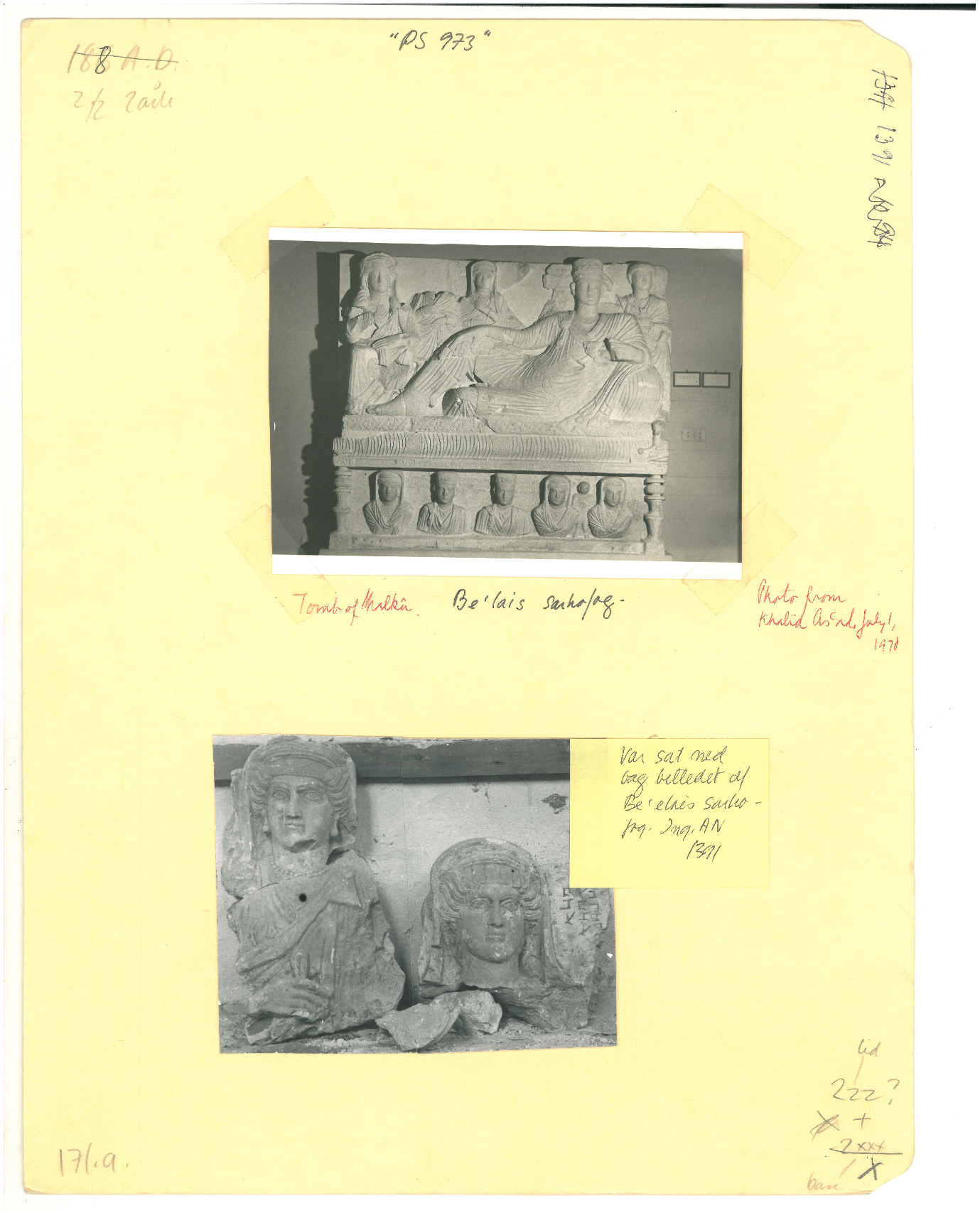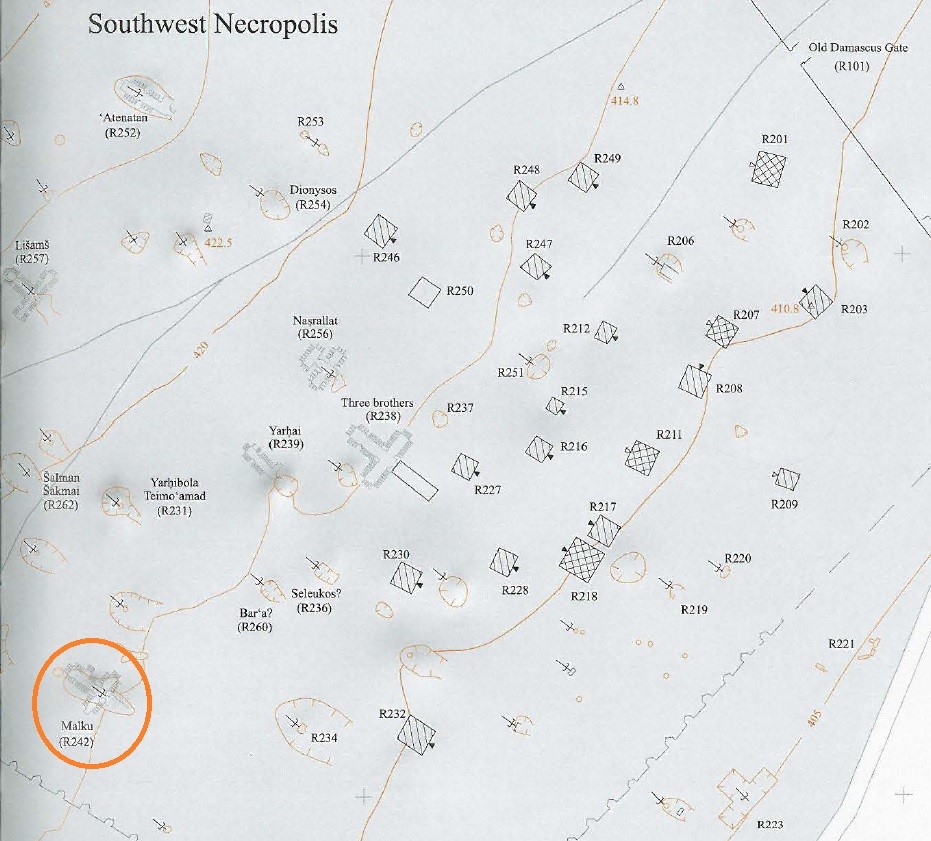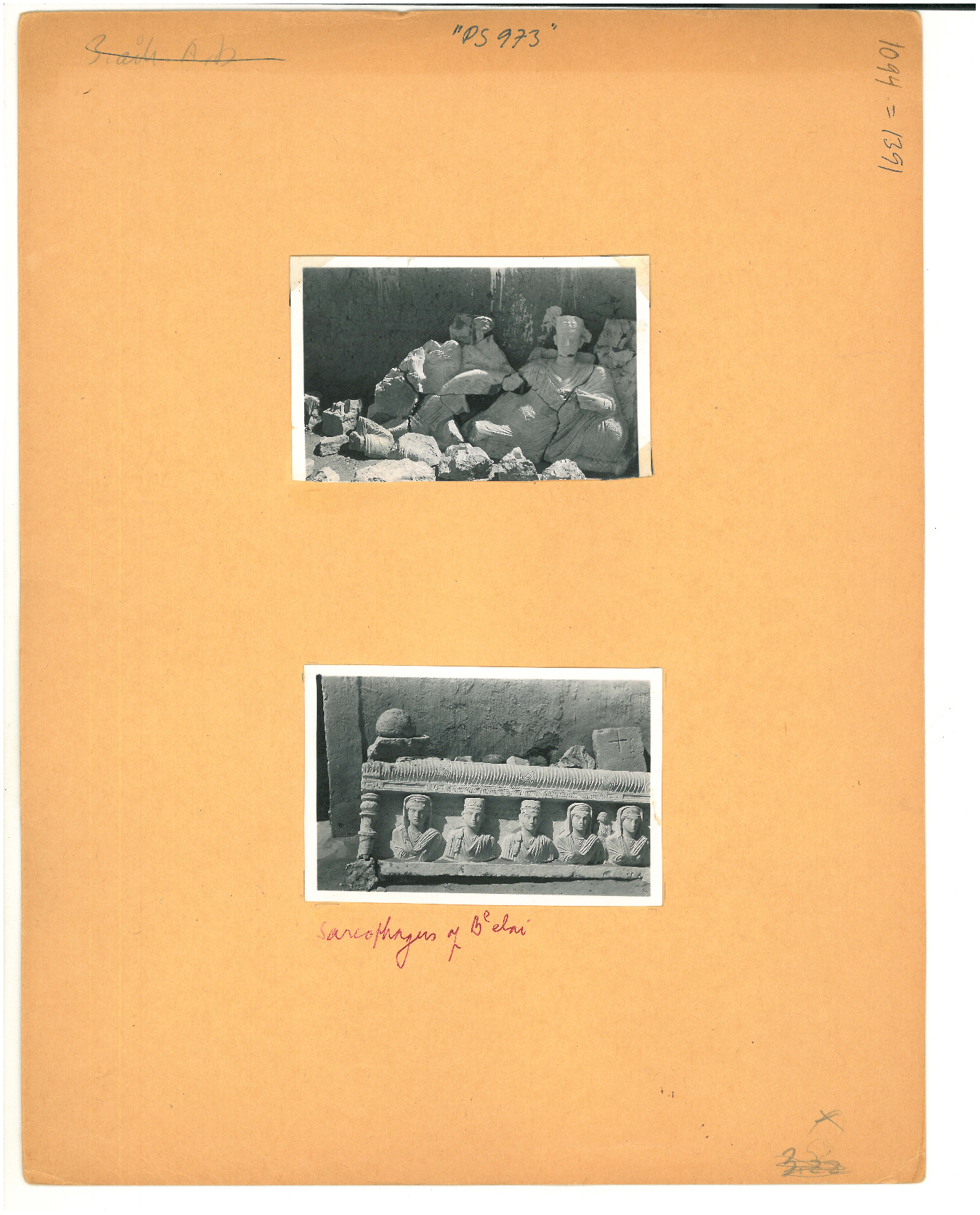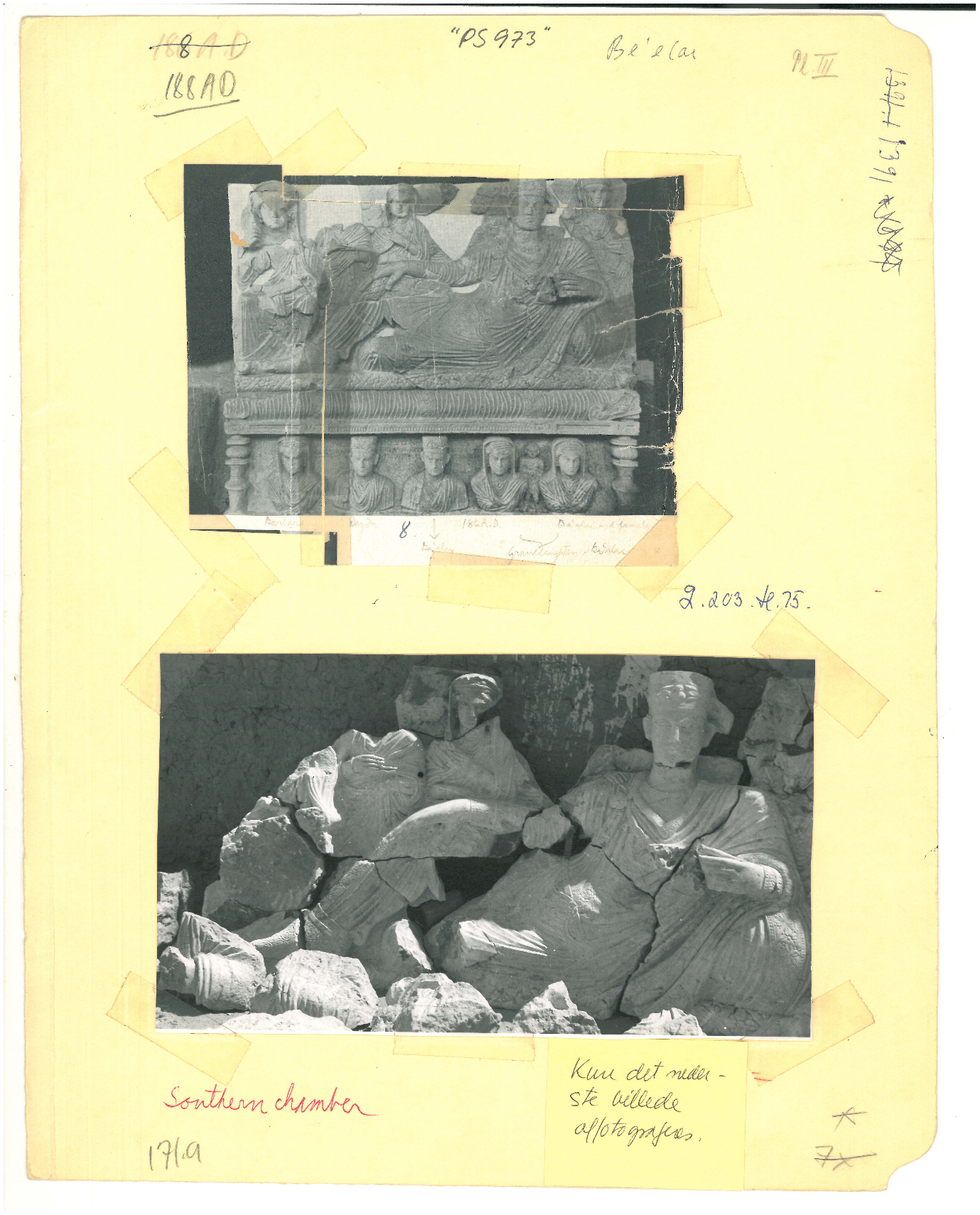Recent damage to Palmyra’s cultural heritage: Documentation of Sarcophagus with Ba’laî and his family through the Ingholt Archive
By Professor Rubina Raja and Research assistant Ditte Kvist Johnson.




Much of the funerary sculpture, still in-situ, set up in the numerous tombs, tower and underground graves, surrounding ancient Palmyra or held in the Palmyra Museum has been damaged due to the conflict in Syria, which began in 2011. The new research project: Archive Archaeology: Preserving and Sharing Palmyra’s Cultural Heritage through Harald Ingholt’s Digital Archives funded by the ALIPH foundation will address issues of preservation and protection of cultural heritage in a digital form through mitigating some of the losses of material culture by turning to archival material. The Ingholt Archive, donated to the Ny Carlsberg Glyptotek by Harald Ingholt in the 1980s (Raja and Sørensen 2015; Nielsen and Raja 2019), provides an important resource to not only explore the large amount of funerary portraiture from Palmyra but also to asses and reconstruct some of the losses of the world’s cultural heritage and the damage done to various objects from Palmyra. In the coming months, the project will highlight selected archive sheets from the Ingholt Archive in order to demonstrate how archival material can be used to re-contextualize and recreate damaged Palmyrene funerary sculpture. At the end of the project, the entire archive will be published in a commented shape – both in print and digitally, in order to be made as widely available to researchers and laymen alike across the world.
In a report published by the American Schools of Oriental Research in March 2016, a sarcophagus with a banqueting scene in the Palmyra Museum (inv. no. A 910/10) was reported damaged in Russian and Syrian news outlets. This damage was a consequence of the capture of Palmyra by ISIS militants in May 2015 and the subsequent military confrontations between these and state troops (Danti and others 2016, 100; Raja 2016a; 2016b; 2017). On the image of the sarcophagus printed in the report, we observe that all the individuals represented have been defaced and large pieces of the sarcophagus lid have been broken off, making it impossible to study elements such as facial features or representations of various attributes such as jewellery. Hence, the sarcophagus is just one of several examples of the severe damage Syrian cultural heritage has suffered.
Fortunately, the sarcophagus had previously been recorded and described both in the Ingholt Archive as well as in publications (Ingholt 1962; 1966; 1970–1971; 1976. See also Ingholt 1935, 90–108). The sarcophagus, which also carries an inscription, depicts a priest, named Ba’laî, with his immediate family (fig. 1) – several inscriptions on the sarcophagus lid not only identify the persons depicted and their relations but also date it to AD 188. Ba’laî is shown reclining on a kline on the sarcophagus lid, wearing Parthian-style clothing, and can be recognized as a priest by his priestly attire, such as the high, cylindrical, flat-topped priestly hat. To the right of him are his three daughters and wife and a standing male named Shalman, who may have been the servant of Ba’laî. On the sarcophagus box, Ba’laî is depicted once more and is flanked to his right by his daughter-in-law, Barbarah, and his son, Dayyôn, and to his left by two granddaughters and a boy. The sarcophagus, which originally stood in the south chamber of the Hypogeum of Malkû located in the Southwest Necropolis in Palmyra, was excavated by Ingholt in 1937 (fig. 2). In the publication of the sarcophagus, Ingholt noted that the sarcophagus was of high quality workmanship and, though it was found broken into several pieces, it had only suffered minor damage. For his publication, Ingholt drew on the several archive sheets for the sarcophagus that he had recorded in his paper archive. The archive sheets included a series of pictures of the sarcophagus as well as specific details relating to it, such as the original location and date. Interestingly, the archive sheets also include pictures of the sarcophagus before it was reconstructed by the excavation team (figs. 3–4). These pictures are important because they allow us to precisely assess any new damages that the sarcophagus has suffered since it was first discovered as well as make it possible to see how it was reconstructed, providing us with important insights into the archaeological methods used at the time of the reconstruction in the 1930s.
In this way, because of the careful documentation made by Ingholt, it is possible to reconstruct an important piece of Palmyrene funerary art and, further on, situate it within the broader framework of Palmyrene archaeology. This example also highlights the importance of archive archaeology as it shows how we might recover invaluable information about damaged cultural heritage.
Further reading:
Danti, M. D. and others. 2016. ‘ASOR Cultural Heritage Initiatives (CHI): Planning for Safeguarding Heritage Sites in Syria and Iraq. NEA-PSHSS-14-001. Weekly Report 85–86 – March 16–29, 2016’, available at: https://en.unesco.org/syrian-observatory/damage-assesment-reports?title=&field_institution_tid=All&date_filter%5Bvalue%5D=&field_report_tags_tid_1=&page=4&order=field_publish_date&sort=asc.
Ingholt, H. 1935. ‘Five Dated Tombs from Palmyra’, Berytus, 2: 57–120.
Ingholt, H. 1962. ‘Palmyrene Inscription from the Tomb of Malkû’, Mélanges de l’Université Saint-Joseph, 38: 101–19.
Ingholt, H. 1966. ‘Some Sculptures from the Tomb of Malkû at Palmyra’ in M. L. Bernhard (ed.), Mélanges offerts à Kazimierz Michalowski (Warsaw: Państwowe Wydawnictwo Naukowe) pp. 457–76.
Ingholt, H. 1970–1971. ‘The sarcophagus of Be’elai and other sculptures from the tomb of Malkû, Palmyra’, Mélanges de l’Université Saint-Joseph, 45: 173–200.
Ingholt, H. 1976. ‘Varia Tadmorea’ in E. Frézouls (ed.), Palmyre: Bilan et Perspectives. Colloque de Strasbourg 18-20 Octobre 1973, Université des Sciences Humaines de Strasbourg. Travaux du Centre de Recherche Sur le Proche-Orient et la Grèce Antiques, 3 (Strasbourg: AECR), pp. 101–37.
Nielsen, A. M. and R. Raja (eds). 2019. The Road to Palmyra (Copenhagen: Ny Carlsberg Glyptotek).
Raja, R. 2016a. ‘The history and current situation of World Heritage sites in Syria: The case of Palmyra’ in K. Almqvist and L. Belfrage (eds), Cultural Heritage at Risk: The Role of Museums in War and Conflict (Stockholm: Axel and Margaret Ax:son Johnson Foundation), pp. 27–47.
Raja, R. 2016b. ‘Illegal trade and export of cultural goods: The case of the Palmyrene funerary portraiture’ in D. Chahin and I. Lindblom (eds), Fighting the Illegal Looting of Syria's Cultural Heritage (Sofia: Norwegian Institute for Cultural Heritage Research), pp. 11–12.
Raja, R. 2017. ‘A virtual market for illegal trade in cultural goods: Palmyra in Syria as an example’ in Nordic Council of Ministers, Illicit trade in cultural artefacts (Copenhagen: Nordic Council of Ministers), pp. 31–33.
Raja, R. 2019. ‘It stays in the family: Palmyrene priestly representations and their constellations’ in S. Krag and R. Raja (eds), Women, children, and the family in Palmyra, Palmyrene Studies, 3 (Copenhagen: Royal Danish Academy of Sciences and Letters), pp. 95–156.
Raja, R. and S. Sørensen. 2015. Harald Ingholt & Palmyra (Aarhus: Aarhus University).
Schnädelbach, K., 2010. Topographia Palmyrena. 1 Topography, Documents d’archéologique Syrienne, 18 (Bonn: Dr. Rudolf Habelt Verlag).
